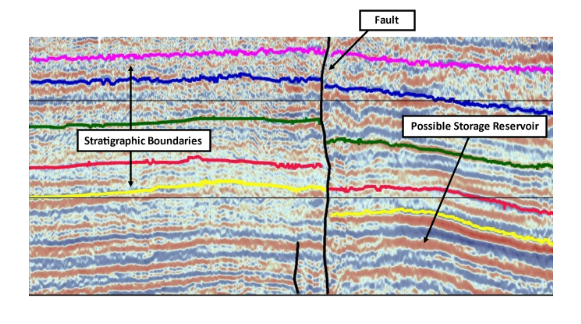Carbon capture and sequestration (CCS) is a multifaceted area of technology that is attracting worldwide attention to address global warming. The objective of CCS is to dramatically reduce the amount of CO2 that industrial activities allow to enter the atmosphere. As the name implies, CCS requires that technologies be developed in two broad fields of science. First, new concepts must be implemented to capture CO2 at its place of origin. Second, methods then must be developed to ensure that this captured CO2 can be sequestered in a manner that will never enter the atmosphere.
Sites producing CO2 include numerous industries and many geographical locations. One proposed ranking of industries that are significant generators of atmospheric CO2 is:
-
Cement plants: 900 kg of CO2 is produced when creating 1000 kg of cement (Amer. Jour. Environ. Sci., 4, no, 5, 2008). There are 1000s of cement plants around the globe.
-
Steel plants: 1.9 tons of CO2 is produced while creating 1 ton of steel (World Steel Assoc., 2008). There are far fewer steel plants than cement plants.
-
Chemical plants, particularly plants that produce ammonia or hydrogen.
-
Petrochemical plants that manufacture plastic and other products.
-
Petroleum refineries.
-
Ethanol plants.
The diversity of these industries shows that Step 1, the requirement to "capture" CO2 at its point of creation, is a challenge. These "capture" challenges are solvable but will require development time and proper testing.
Step 2 of the CCS process, the "sequestration" step, can be accomplished in two ways. Option 1 is biological sequestration, which involves regenerating forests and establishing large algae farms along coastlines and in inland locations. Considerable attention is focused on these strategies.
Option 2 is geological sequestration, which involves injecting CO2 into deep porous reservoirs. This option is getting considerable attention because many geoscientists in the oil and gas industry are familiar with deep, porous reservoirs. An example of a possible storage reservoir with an associated fault is shown in Figure 1.

Geological reservoirs are compartmented. This compartmentalization is caused by faults that segregate a reservoir into distinct blocks: shale layers that isolate porous rock, chemical reactions that convert porous rocks to impermeable rock, or coarse-grain rock transitioning laterally into fine-grain rock.
It is essential to detect and map all faults associated with a deep CO2 storage reservoir. The accepted method to accomplish this task is to interpret 3-dimensional seismic reflection data across a CO2 storage site. If any fault connects a CO2 storage reservoir with a granitic basement, that storage site should be abandoned. The reason is that when liquid CO2 is injected into the reservoir, each injection increases pore pressure in the reservoir rock by an amount ∆P. A basic principle of stress dynamics in porous rocks is that an increase ∆P in pore pressure will increase horizontal stress by an amount ∆SH that has a value of about 0.7 of ∆P.
It is imperative that those who sequester CO2 in deep porous reservoirs know that there is not a single fault that connects a CO2 storage reservoir with the basement. This requirement means that conventional fault interpretation of 3D seismic data needs to be raised to a higher level of fault detectability. In the search for candidate CCS reservoirs, advances in fault recognition in 3D seismic are being realized by applying machine learning and artificial intelligence (AI) aiding geoscientists. Seismic interpretation software companies, like Geophysical Insights in Houston, Texas, have developed machine learning technology to identify and locate faults in a region of Earth rapidly, frequently within an hour. A leading method uses Convolutional Neural Networks (CNNs) on seismic data to identify faults through pattern recognition using deep learning. CNNs recognize and classify particular features from images and are widely used to analyze visual patterns in data, such as medical imaging, facial recognition, and natural language processing. In seismic data, faults appear as a special group of edges and are particularly time-consuming for a human to identify. The tasks often take weeks for a large region, which is why the new automated CNN-based methods are gaining traction so quickly in the industry.


If a fault connects a storage reservoir to granitic basement rock, each injection of CO2 creates an increase of horizontal stress inside the reservoir that transfers to the basement and creates seismicity that can travel 200-300 km from the storage site. An example of this type of seismicity is illustrated in Figure 3. The injection well involved in this example was a water disposal well from hydraulic fracturing ("fracking"), not a CO2 injection well. However, this seismicity problem is independent of the liquid injected in a shallower reservoir when a fault connects that reservoir to the basement.
The red dots in Figure 3 identify locations of seismic quakes. The injection well was a short distance east of Oklahoma City. No seismicity was observed near the well until 2009. Seismicity then began, followed the basement's Nemaha Ridge northward for 150-km into Kansas, and post-2015 has followed the Nemaha Ridge another 50-km northeastward toward St. Louis.
Several seismic events in this odyssey were strong enough to raise public awareness and concern. CCS projects are too important for this type of seismicity to occur and create pushback from the public about the practice of CO2 sequestration. New machine learning technologies should help avoid this problem in the search for reliable CCS reservoirs.

Bob Hardage, Ph.D.
Dr. Bob Hardage is an independent consultant and geoscience advisor. He holds a Ph.D. in Physics from the University of Oklahoma. In addition to his work in industry, Dr. Hardage was a Senior Research Scientist for 28 years at the Bureau of Economic Geology at the University of Texas at Austin.
* This is a contributed article and this content does not necessarily represent the views of sciencetimes.com















